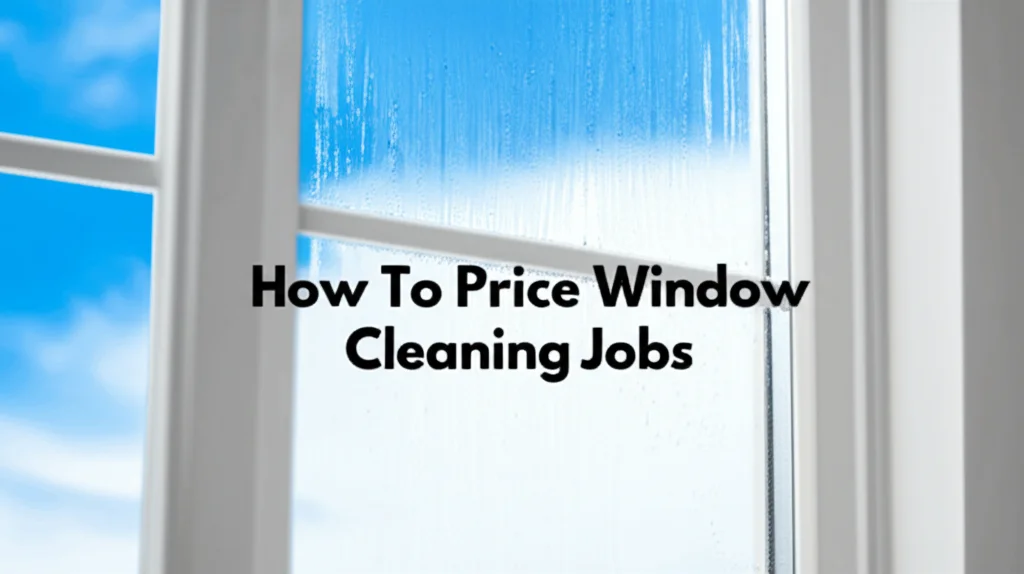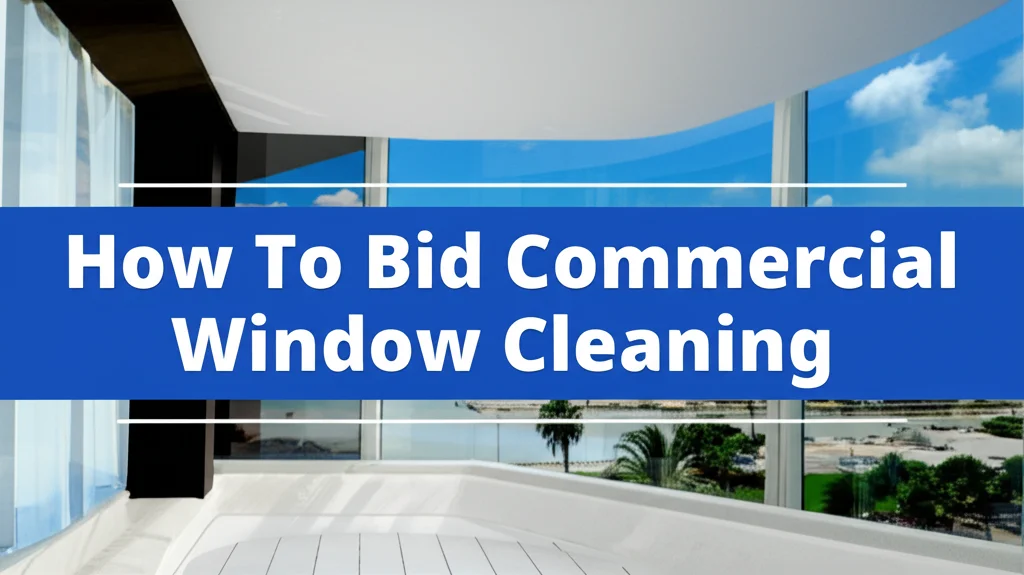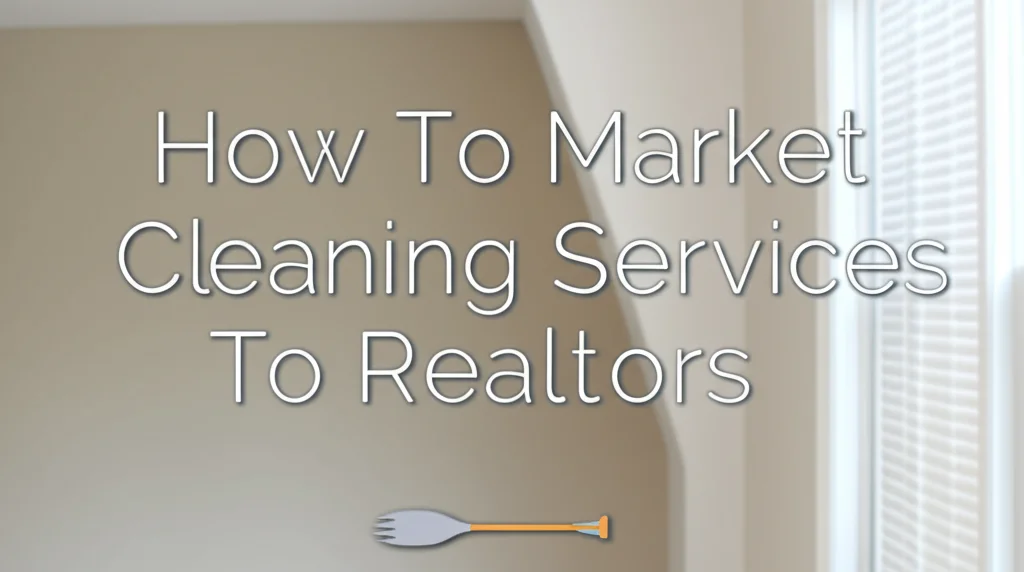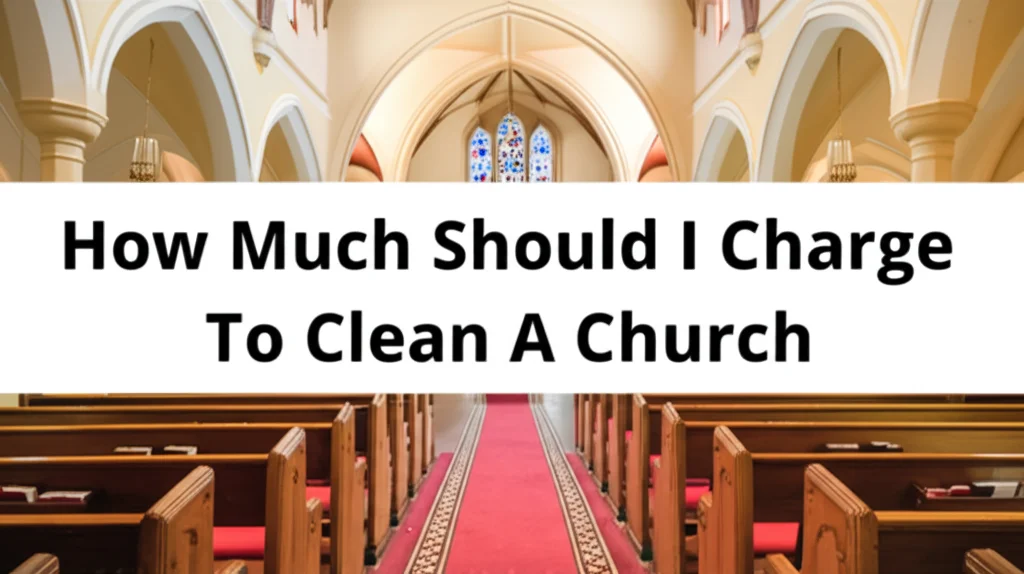· Cleaning Business · 7 min read
How Much To Charge For Commercial Window Cleaning
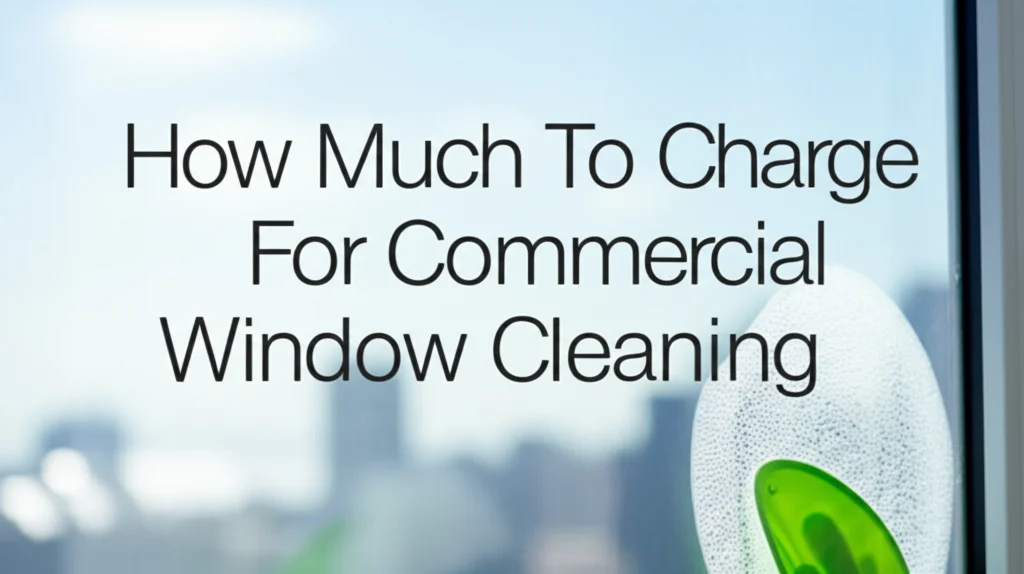
How Much To Charge For Commercial Window Cleaning?
Are you starting a commercial window cleaning business and wondering what to charge? Setting the right price is crucial for attracting clients and ensuring profitability. It’s a balancing act – too low, and you undervalue your services; too high, and you risk losing business. This article will break down everything you need to know about commercial window cleaning pricing, from factors that influence cost to different pricing methods and how to create winning bids. We’ll cover everything to help you confidently quote your services.
Commercial window cleaning prices vary significantly based on several factors. Generally, you can expect to charge between $0.25 and $1.00 per square foot of window space. However, this is a broad range, and a precise quote requires careful consideration of the specific job. Let’s dive into the details.
Quick Answer: Commercial window cleaning typically costs between $0.25 and $1.00 per square foot, but prices can vary based on window accessibility, size, and the complexity of the job.
Takeaway:
- Accurately assess job complexity.
- Factor in all costs (labor, supplies, travel).
- Choose a pricing method that suits your business.
- Always provide detailed, professional quotes.
Understanding the Factors That Influence Commercial Window Cleaning Costs
Several key factors determine how much you should charge for commercial window cleaning. Ignoring these can lead to underbidding and lost profits. Let’s explore these factors in detail.
Window Accessibility
Accessibility is a major cost driver. Windows on the ground floor are much easier and faster to clean than those on higher levels. Reaching high windows often requires specialized equipment like lifts, boom trucks, or rope access techniques, all of which add to the cost. Consider the safety implications and the time required for setup and takedown. A building with many hard-to-reach windows will naturally command a higher price.
Window Size and Type
The size of the windows directly impacts the time it takes to clean them. Larger windows require more effort and cleaning solution. Different window types also affect pricing. For example, storm windows or windows with intricate designs will take longer to clean than standard panes. Specialty glass, like tinted or reflective glass, may require specific cleaning products and techniques.
Window Condition
The condition of the windows plays a significant role. Heavily soiled windows, with things like bird droppings, hard water stains, or paint splatters, require more scrubbing and specialized cleaning solutions. Windows that haven’t been cleaned in a long time will take considerably longer to restore to a sparkling condition. This extra time and effort should be reflected in your pricing.
Building Height and Structure
The height of the building is a critical factor, as it dictates the equipment needed. Low-rise buildings (one to three stories) can often be serviced with ladders and water-fed poles. Higher buildings require more expensive and complex equipment, like lifts or rope access systems. The building’s structure also matters; complex architectural features can make access more difficult and time-consuming.
Frequency of Cleaning
Regularly scheduled cleaning is typically cheaper than one-time or infrequent cleaning. Maintenance cleaning prevents heavy buildup of dirt and grime, making each cleaning session faster and easier. Offering discounted rates for recurring services can incentivize clients to commit to a long-term contract. This provides you with a steady stream of income and reduces the need for constant bidding.
Common Commercial Window Cleaning Pricing Methods
There are several ways to price your commercial window cleaning services. Each method has its pros and cons, so choose the one that best suits your business model and target market.
Per-Window Pricing
This is a straightforward method where you charge a fixed price per window. It’s easy to understand and quote, but it doesn’t account for variations in window size or accessibility. This method works best for buildings with uniformly sized windows and easy access. You’ll need to determine an average price per window based on your costs and desired profit margin.
Per-Square-Foot Pricing
This is the most common method for commercial window cleaning. You calculate the total square footage of all the windows and charge a price per square foot. This method is more accurate than per-window pricing, as it considers the actual amount of glass you’re cleaning. The price per square foot typically ranges from $0.25 to $1.00, depending on the factors discussed earlier.
Hourly Rate Pricing
Charging an hourly rate is suitable for complex jobs with unpredictable cleaning times. It’s often used for interior window cleaning or for buildings with unique challenges. However, it can be difficult to estimate the total cost accurately, and clients may be hesitant to agree to an open-ended price. Be sure to track your time carefully and provide a clear estimate of the expected hours.
Project-Based Pricing
For large or complex projects, a project-based price can be the most effective. You assess the entire job, estimate the time and materials required, and provide a fixed price for the entire project. This method offers price certainty for the client and allows you to factor in all costs and potential challenges. It requires a thorough site inspection and accurate estimation skills.
Creating Accurate and Competitive Bids
Winning bids requires more than just low prices. You need to present a professional, detailed quote that demonstrates your value and expertise. Here’s how to create winning bids.
Thorough Site Inspection
Before submitting a bid, conduct a thorough site inspection. Assess window accessibility, size, condition, and any potential challenges. Take detailed measurements and photos to accurately calculate the square footage and identify any special requirements. This will help you create a more accurate and competitive quote.
Detailed Quote Breakdown
Your quote should clearly outline all costs involved. Include a breakdown of labor, materials, equipment rental, travel expenses, and any other applicable fees. Be transparent about your pricing and avoid hidden charges. A detailed quote builds trust and demonstrates your professionalism.
Consider Your Overhead Costs
Don’t forget to factor in your overhead costs when calculating your prices. These include insurance, vehicle maintenance, marketing expenses, and administrative costs. Failing to account for overhead can lead to underbidding and reduced profitability. Calculate your overhead costs accurately and allocate them appropriately to each job.
Research Competitor Pricing
Research what your competitors are charging for similar services in your area. This will give you a benchmark for your pricing and help you stay competitive. However, don’t simply undercut your competitors; focus on providing superior value and service. Highlight your unique selling points and demonstrate why your services are worth the price.
Offer Value-Added Services
Consider offering value-added services to differentiate yourself from the competition. These could include screen cleaning, sill wiping, or gutter cleaning. Bundling services can increase your revenue and provide added convenience for your clients. Promote these services in your quotes and marketing materials.
Frequently Asked Questions (FAQs)
Q: What is the average profit margin for commercial window cleaning?
A: The average profit margin for commercial window cleaning typically ranges from 15% to 30%. This depends on factors like overhead costs, pricing strategy, and efficiency. Careful cost management and competitive pricing are essential for maximizing profitability.
Q: How often should commercial windows be cleaned?
A: The frequency of cleaning depends on the building’s location and environment. Generally, windows should be cleaned at least twice a year, but more frequent cleaning (quarterly or monthly) may be necessary in high-traffic areas or polluted environments.
Q: Do I need insurance for commercial window cleaning?
A: Yes, insurance is essential for commercial window cleaning. You’ll need general liability insurance to protect yourself from property damage or injuries. Workers’ compensation insurance is also required if you have employees.
Q: What equipment is essential for commercial window cleaning?
A: Essential equipment includes ladders, water-fed poles, squeegees, buckets, cleaning solutions, microfiber cloths, and safety harnesses. Depending on the building height, you may also need lifts or boom trucks.
Conclusion
Determining how much to charge for commercial window cleaning requires careful consideration of various factors. By understanding window accessibility, size, condition, and building height, you can accurately assess the complexity of each job. Choosing the right pricing method – per-window, per-square-foot, hourly rate, or project-based – is crucial for profitability. Remember to create detailed, competitive bids that showcase your value and expertise. Don’t underestimate the importance of insurance and proper equipment. Ultimately, successful commercial window cleaning businesses prioritize both competitive pricing and exceptional service. Are you ready to start quoting and winning commercial window cleaning jobs? https://www.beacleaner.com/how-to-clean-outside-windows-upstairs/ can help you with the technical aspects of cleaning those hard-to-reach windows!

